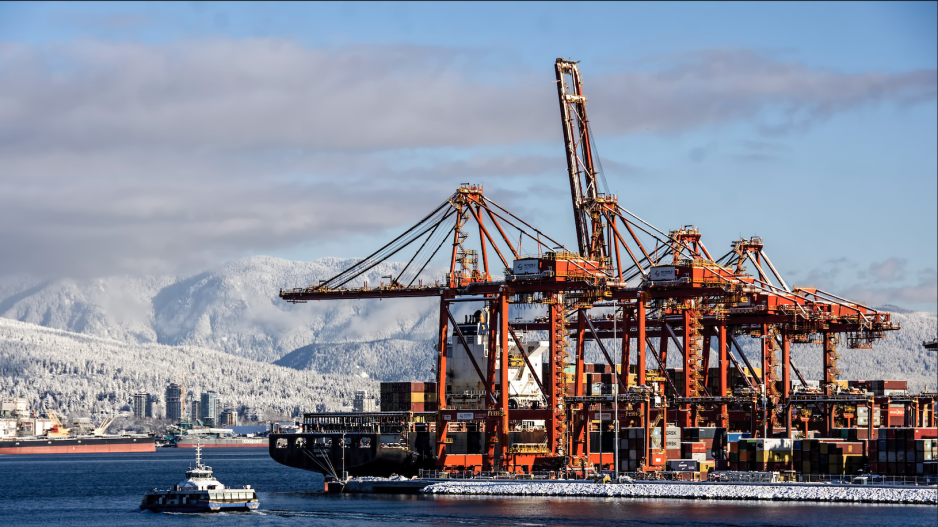If the opening round of negotiations to reach a new collective agreement between employers and dockworkers on B.C.’s West Coast is any indication, supply chain disruption red flags should be waving.
It hasn’t taken much more than a handful of preliminary discussions to get the federal government involved.
That could be good news or bad news, depending on your perspective.
Good news if that call for federal involvement accelerates what has traditionally been protracted contract negotiations in one of the most important trade gateways in Canada; bad news if that call for conciliation means gaps in key issues such as wages, benefits and are already too wide for either side to see a way to bridge them on their own.
Any additional disruption caused by a labour dispute in supply chain that has suffered from historic bottlenecks over the past three years would seriously damage business prospects for Canada’s Asia-Pacific Gateway now and well into the future. And that would have major implications for a B.C. economy that already faces significant challenges in 2023.
The current five-year contract between the BC Maritime Employers Association and the International Longshore & Warehouse Union Canada (ILWU) expires on March 31.
Contract negotiations between the two sides began in mid-February, but ILWU Canada has already filed a Federal Mediation and Conciliation Service (FMCS) notice of dispute with the federal minister of labour, which would indicate that the union is not happy with the pace of negotiations thus far.
Considering that the current collective agreements for the 7,400 unionized dockworkers and foremen employed at Canada’s West Coast ports , the union’s decisions to file a notice of dispute already is unusual.
Asked to comment on the status of negotiations for a new contract, ILWU Canada president Rob Ashton would say only that “we are entering FMCS with the BCMEA, and we are hopeful for a good collective agreement for our members.”
The union’s notice of dispute filing points either to major negotiation hurdles right out of the starting gate or an ILWU desire to accelerate the collective bargaining process at a volatile time in transpacific and other major global trade lanes.
B.C.’s Asia-Pacific Gateway is hoping it is the latter.
The federal government appears to share that hope.
It assigned two senior conciliation officers to the file yesterday (March 29), even though under the Canada Labour Code the labour minister has up to 15 days to make that appointment. The conciliation officers appointed to the file are Kathy Peters, FMCS regional director for the Pacific Region, and FMCS Director General Peter Simpson.
Under the labour code, the two will have 60 days to resolve the contentious issues in the contract negotiations. A 21-day cooling-off period begins at the end of the 60 days.
That would leave the door open for a strike or lockout along B.C.’s waterfront in late June
But it is not just Canada’s West Coast that faces potential port labour disruption. Unionized dockworkers at major U.S. ports are also in contract negotiations with their employer, and negotiations between the Pacific Maritime Association, which represents employers, and the International Longshore and Warehouse Union, which represents approximately 22,000 dock workers, have dragged on since last May.
The contract between the two sides expired on July 1, 2022.
West Coast marine cargo chaos sparked by a labour dispute is the last thing B.C. and the rest of the country’s Asia-Pacific Gateway need.
Transpacific supply chains have only recently begun to recover from historic bottlenecks caused by the onset of the pandemic and the subsequent North American spike in goods demand.
That freight disruption has caused massive swings in container cargo prices and shipping costs that have challenged consumers and businesses to keep their heads above water in 2023’s inflationary high tide.
For port terminal employers and employees, a labour disruption raises other business risks.
The potential for more service disruptions along North America’s West Coast has already and further south to ports in Mexico.
The longer and more contentious West Coast port contract negotiations become, the more major shipping lines will accelerate that cargo migration away from the West Coast.
According to data compiled by container shipping analyst John McCown, February was the fifth straight month of double-digit percentage declines in imports for North America’s West Coast and the 21st straight month in which the percentage change in volume at East and Gulf Coast ports had outperformed West Coast ports.
Overall, inbound container volume to West Coast U.S. ports was down 37 per cent in February compared with the same time in 2022.
Container traffic through Vancouver and Prince Rupert in 2022 has also been lower than in 2021.
Trade through B.C.’s ports is critically important to the province and the rest of Canada. They handle approximately 25 per cent of the country’s total exports and imports and move an estimated $290 billion worth of cargo annually.
They also provide a wealth of high-paying jobs.
According to BCMEA numbers, the 9,400 jobs created by its membership base of employers generate wages of close to $1 billion. The average annual wage per job is approximately $109,600 compared with B.C.’s average annual wage of $56,200.
Both the BCMEA and ILWU Canada declined to comment on the current state of contract negotiations.
But the BCMEA’s update on those negotiations posted on its website notes that, while it is committed to arriving at fair and equitable collective agreements “that recognize the efforts and skills of B.C.’s waterfront workforce,” it also must ensure that the country’s West Coast ports remain competitive.
“Stable and reliable West Coast ports,” it notes, “are critical to our nation’s economic and social well-being.”.
twitter.com/timothyrenshaw



